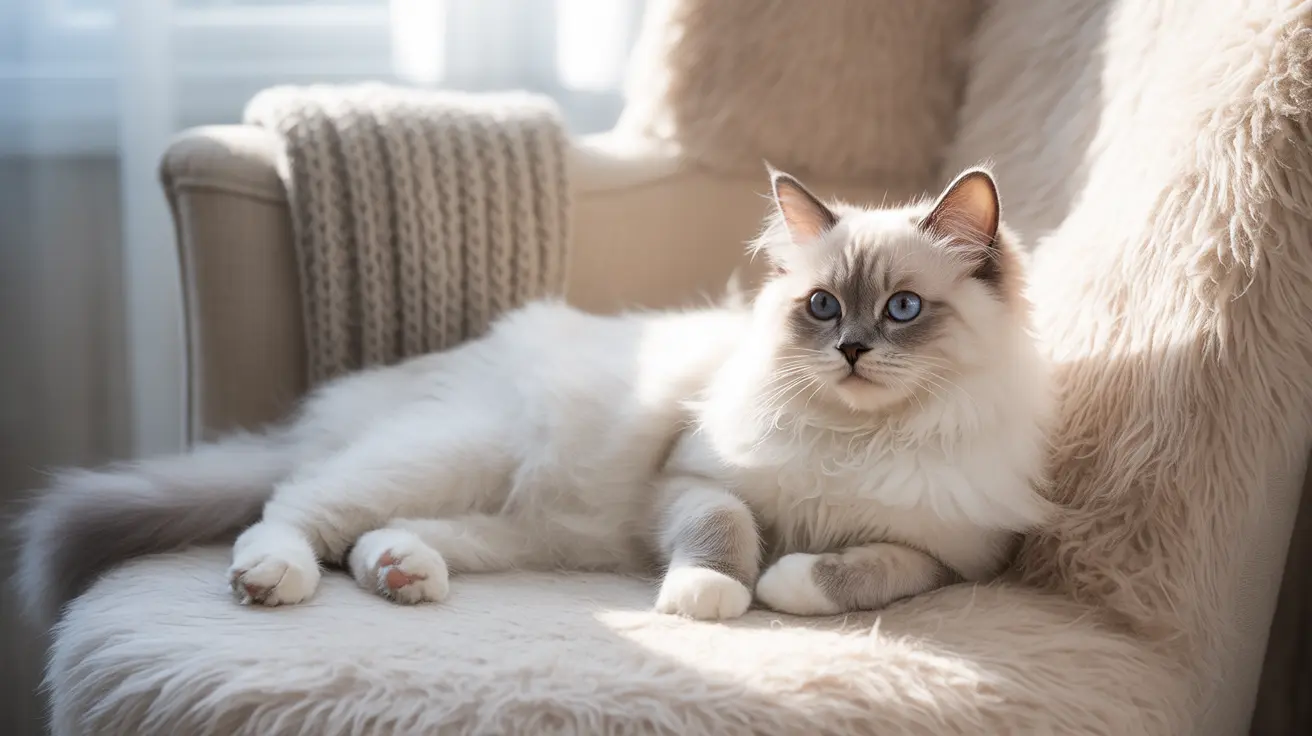The Nature of Feline "Meditation"
Cats exhibit several behaviors that resemble meditative states, though these are instinctive rather than intentional practices. Their ability to maintain focused attention, practice deep relaxation, and engage in rhythmic breathing during rest periods creates an appearance of meditation-like tranquility.
These natural states serve important biological and psychological functions for cats, helping them regulate stress, conserve energy, and maintain optimal alertness for hunting and survival.
The Cat Activity Cycle and Stress Regulation
Cats follow a natural activity cycle that promotes balance and calm: hunt/play → eat → groom → sleep. This predictable pattern helps cats maintain emotional equilibrium and reduce stress. Understanding this cycle can help cat owners create more structured, peaceful environments for their pets.
During these cycles, cats display various self-soothing behaviors, including:
- Methodical grooming sessions
- Strategic resting periods
- Focused observation periods
- Controlled breathing patterns
How Cats Influence Human Relaxation
Research suggests that spending time with cats can provide numerous stress-reduction benefits for humans. The rhythmic sound of purring, the gentle presence of a calm cat, and the act of peaceful observation can all contribute to lower blood pressure and reduced anxiety levels in people.
When cats are in their natural state of relaxation, they can help humans:
- Slow down and practice mindfulness
- Reduce stress hormone levels
- Improve mood and emotional well-being
- Enhance focus and concentration
Creating Mindful Moments with Your Cat
To cultivate mutual relaxation with your cat, consider these evidence-based approaches:
- Establish quiet, dedicated time for observation and gentle interaction
- Respect your cat's natural activity cycles
- Create a calm environment free from sudden noises or disturbances
- Practice slow, deep breathing while sitting near your relaxed cat
- Allow natural interactions without forcing engagement
Frequently Asked Questions
Do cats actually meditate or just appear calm and mindful?
Cats don't intentionally meditate in the way humans do. However, they naturally enter states of deep relaxation and focused attention that resemble meditation. These states are instinctive behaviors that help them regulate stress and maintain alertness.
How does spending time with cats reduce human stress and improve mood?
The presence of a calm cat can trigger the release of positive hormones like oxytocin while reducing stress hormones like cortisol. The rhythmic sound of purring, gentle physical contact, and the act of observing their peaceful behavior can all contribute to human stress reduction.
What natural behaviors do cats display that resemble meditation?
Cats exhibit several meditation-like behaviors, including sustained focused attention (like window-watching), rhythmic breathing during rest, deep relaxation states, and periods of quiet alertness. These behaviors are part of their natural activity cycles.
How can I practice mindfulness or meditation with my cat to enhance relaxation?
Create a quiet space, observe your cat's natural calm periods, and synchronize your relaxation time with their rest cycles. Practice slow breathing while sitting near your cat, and avoid disturbing them when they're in a peaceful state.
What signs show that my cat is relaxed and in a calm, content state?
Look for soft, half-closed eyes, gentle tail movements, neutral ear position, and relaxed body posture. Purring, when accompanied by these other signs, typically indicates contentment. Kneading behavior and a peaceful facial expression are also positive indicators.
Conclusion
While cats may not meditate in the human sense, their natural states of calm and relaxation offer valuable lessons in mindfulness. By understanding and respecting these feline characteristics, we can create more harmonious relationships with our cats while benefiting from their natural ability to promote relaxation and stress reduction in their human companions.






